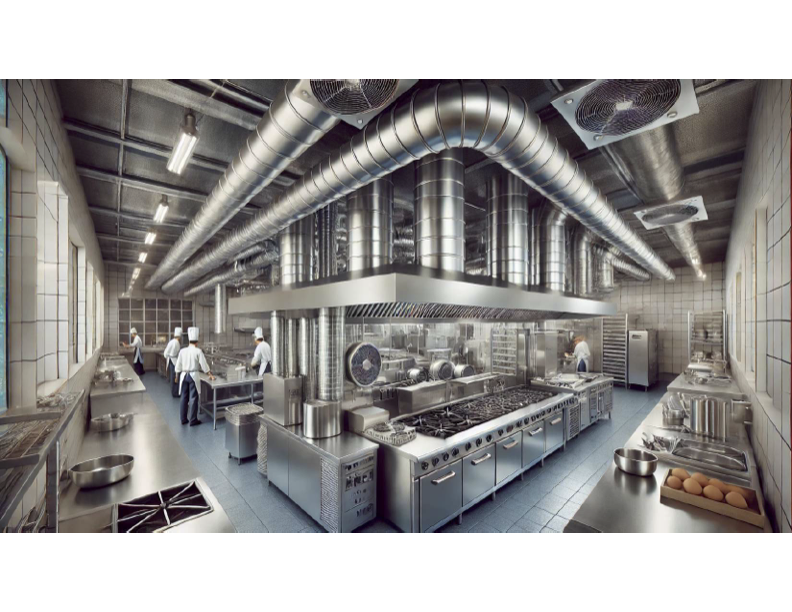What is HVAC?
HVAC stands for Heating, Ventilation, and Air Conditioning. It is a system designed to provide thermal comfort and indoor air quality for residential, commercial, and industrial buildings. HVAC systems regulate temperature, humidity, and air circulation to create a comfortable and healthy indoor environment.
Types of HVAC Systems
There are several types of HVAC systems, each suited for different applications and building sizes.
1. Heating Systems
Used to maintain a warm indoor environment during cold weather.
- Furnaces – Use gas, electricity, or oil to generate heat.
- Boilers – Use water or steam to distribute heat through radiators.
- Heat Pumps – Transfer heat from outside air or ground into indoor spaces.
- Radiant Heating – Uses electric heating panels or water-based systems beneath floors or walls.
2. Ventilation Systems
Responsible for air circulation, removal of contaminants, and maintaining indoor air quality.
- Natural Ventilation – Relies on windows, vents, and openings.
- Mechanical Ventilation – Uses fans, ducts, and filters for airflow.
- Energy Recovery Ventilators (ERV) & Heat Recovery Ventilators (HRV) – Improve energy efficiency by recycling indoor air.
3. Air Conditioning Systems
Used for cooling and dehumidifying indoor spaces.
- Central Air Conditioning – Uses a central unit to cool and distribute air through ductwork.
- Split Systems – Consist of an indoor and outdoor unit for localized cooling.
- Ductless Mini-Split Systems – Ideal for homes without ductwork.
- Window Units & Portable ACs – Cost-effective solutions for small spaces.
- Chillers – Used in large commercial buildings for cooling.
4. Hybrid Systems
- Combine different heating and cooling technologies for improved energy efficiency.
- Example: A hybrid heat pump system switches between gas and electricity based on outdoor conditions.
Components of an HVAC System
- Thermostat – Controls temperature and system operations.
- Furnace or Heat Source – Provides heating to the building.
- Evaporator Coil – Absorbs heat from indoor air (for cooling).
- Condensing Unit – Releases absorbed heat outside (for cooling).
- Ductwork & Vents – Distribute conditioned air throughout the building.
- Air Filters – Remove dust, allergens, and pollutants from the air.
- Blower Fan – Circulates air through the system.
- Refrigerant – Facilitates heat exchange in cooling systems.
HVAC System Efficiency & Maintenance
To ensure optimal performance, HVAC systems require regular maintenance and energy-efficient practices.
Energy Efficiency Tips
- Use a programmable thermostat to optimize temperature control.
- Regularly clean or replace air filters to improve airflow and efficiency.
- Ensure proper insulation to prevent heat loss or gain.
- Upgrade to energy-efficient HVAC models (such as SEER-rated AC units).
- Use ceiling fans to assist with air circulation.
Maintenance Best Practices
- Schedule annual HVAC inspections by professionals.
- Clean air ducts periodically to prevent blockages and maintain air quality.
- Check refrigerant levels in air conditioning systems.
- Ensure proper ventilation to prevent moisture buildup and mold growth.
Smart HVAC Technology
Advancements in HVAC technology have led to the development of smart systems for improved efficiency and automation.
- Smart Thermostats (e.g., Nest, Ecobee) allow remote temperature control and energy savings.
- Zoned HVAC Systems enable different temperature settings for different rooms.
- IoT-enabled HVAC Systems use AI and automation for predictive maintenance and energy management.
Conclusion
HVAC systems play a crucial role in maintaining comfort and indoor air quality. Choosing the right system depends on factors such as climate, building size, energy efficiency, and budget. Regular maintenance and smart technology integration can enhance system performance and longevity.

